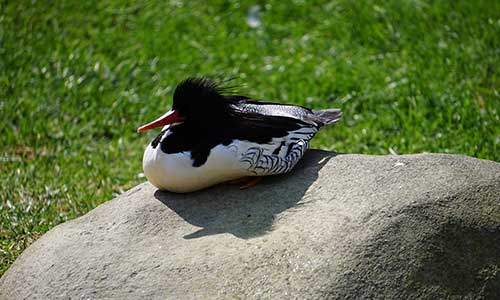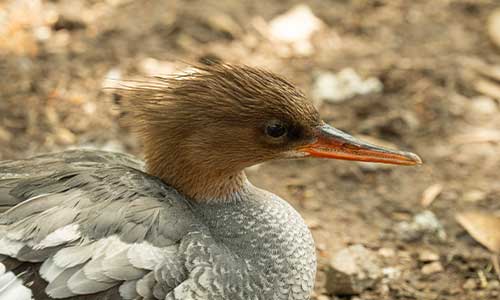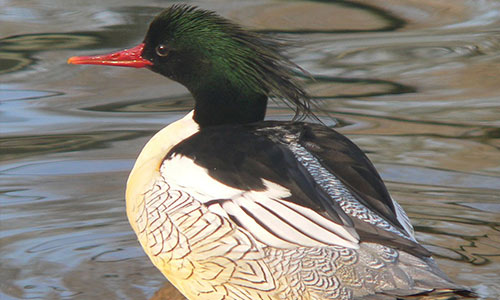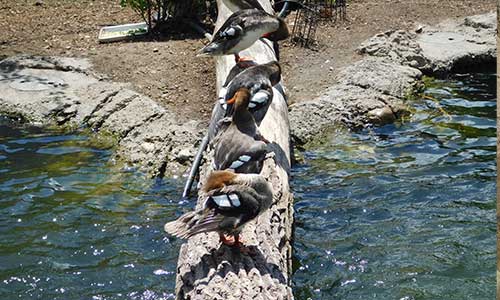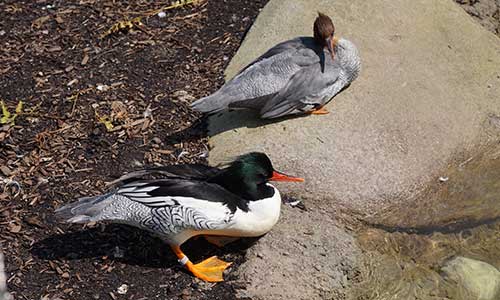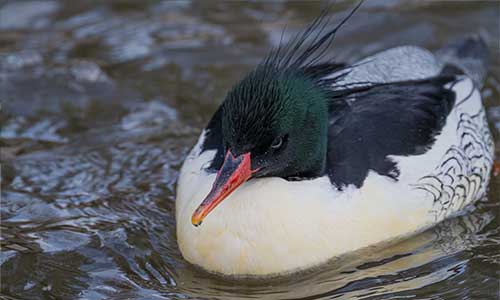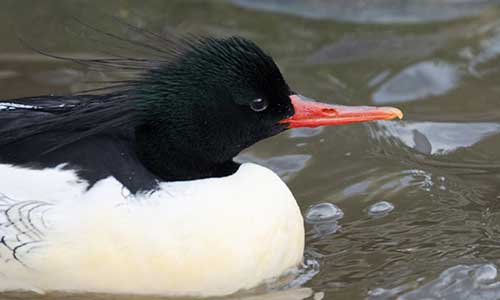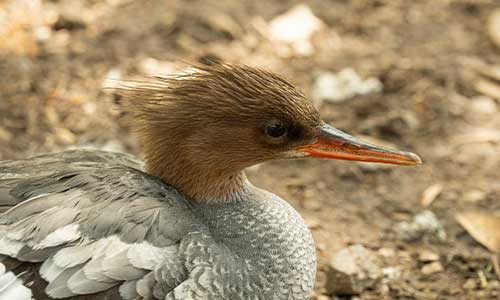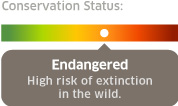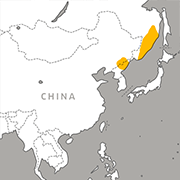Appearance:
The scaly-sided merganser has a thin, serrated, red bill and a black, green glossed head with a large crest of feathers on males, and brown on females. The chest, throat, and stomach are white, and males have a grey scale pattern on their wings and back. Their legs are far back on their bodies to help with diving, but this makes walking on land awkward. Waterproof feathers and a thick layer of down help mergansers hunt in cold water.
Size:
Length: About 20 inches
Diet:
Mergansers are carnivorous and eat small fish, crustaceans, and insects.
Reproduction:
The merganser's courting ritual consists of mirrored head-bobbing motions and harsh squawks. Usually in April or May, scaly-sided mergansers lay four to 12 eggs per clutch. The young are able to fly at eight weeks.
Behavior:
Mergansers use their powerful hind legs to dive into rivers for prey and sometimes dabble for insects on the surface of the water. They nest in tree hollows up to 60 feet above the ground. These birds regularly form nesting trios, consisting of one male and two females who raise their young communally. By reason of their nesting trio behavior, up to 20% of a community of mergansers can be breeding adults. Chicks jump out in order to join their parents before they can fly.
Role in their habitat:
As a predator bird, they regulate populations of small water animals. In turn, they are prey for animals like eagles and wolves, and merganser eggs are eaten by mustelids.
Habitat/Range:
Mergansers live in southern Russia and northern China, Korea, and Japan. During breeding season, the scaly-sided merganser lives in mountain rivers where there are large amounts of hollow trees. During the winter, it lives in slower lakes and rivers.
Median Life Expectancy:
12 years in the wild
Conservation:
Endangered. At risk due to habitat loss, fishing accidents, and illegal hunting.

